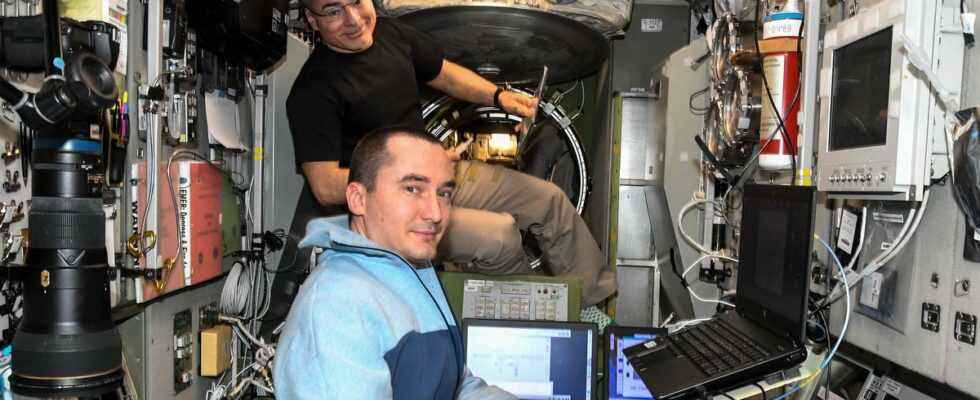A team of Canadian scientists has published its data collected on a large sample of astronauts after long-duration missions. A recurring problem, their bones do not regenerate completely, even after a year of recovery. And we are still far from the flight times for Mars…
Emphasis should be placed on strategies to limit losses.
Don’t fall on a bone
Long-term space travel is not without effects on the human body. After 60 years of manned flight and more than 40 years of stays of several months around the Earth, medicine has identified several sequelae in astronauts who have returned to Earth.
Their eyes are affected, as is their muscle mass, which decreases in weightlessness. The researchers also noted the loss of bone mass, which can be associated with a form of osteoporosis. However, until now, the effects on the skeleton were considered reversible. Except that…
A Canadian team showed in its study that for the longest flights (6 to 7 months and more), a full year on Earth was not enough to regenerate bone mass. More importantly, there are structural differences between healthy and recovered bones, with reinforcement not being identical. For some astronauts, this equates to a decade of bone aging.
Beware of the structure
One of the study’s authors, Steven K. Boyd, explains:
We could use a metaphor of the Eiffel Tower. Metal beams can be compared to the structures observed within bones in high resolution. During spaceflight, some of these beams are disconnected, the bone resorbs. When the astronaut returns to Earth, he recovers, but the new bone structures come to rest on the existing structure. The body cannot magically reconnect the beams, so the change is permanent, even if the overall density is partially or fully recovered. Imagine the Eiffel Tower with the same metal mass, but fewer beams.
This does not mean that the bones of astronauts break easily after long flights, but this effect is to be monitored… Especially since, as it stands, there is relatively little data for very long missions (one year or more), with the HR-pQCT (High Resolution Peripheral Quantitative Computed Tomography) method which allows nanometric precision.
Every adventure has its risks!
Scientists hope to be able to quantify and predict, based on the biometric data of future astronauts and their mission, the loss of bone mass that awaits them and the time it will take for them to recover. This will require further measurements and studies (this one was centered on 17 astronauts) for very long missions, before even considering possible preventive treatments.
The big agencies will be attentive to this, while, slowly, long missions around the Moon are looming, and even the desire to travel to Mars. Very long missions could have serious consequences for the participants.
Sources: Universe Today, Nature

8